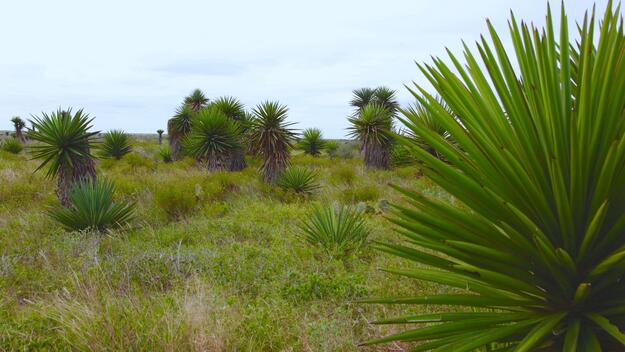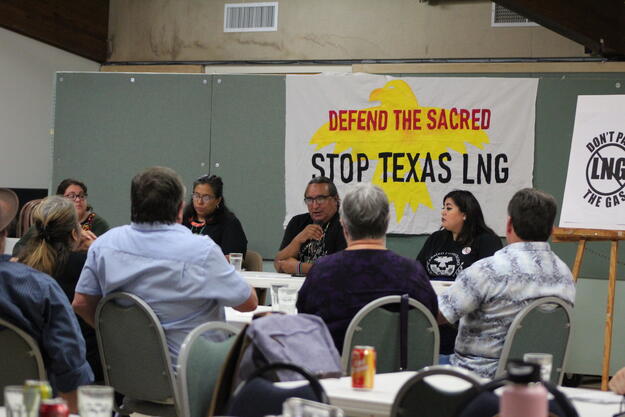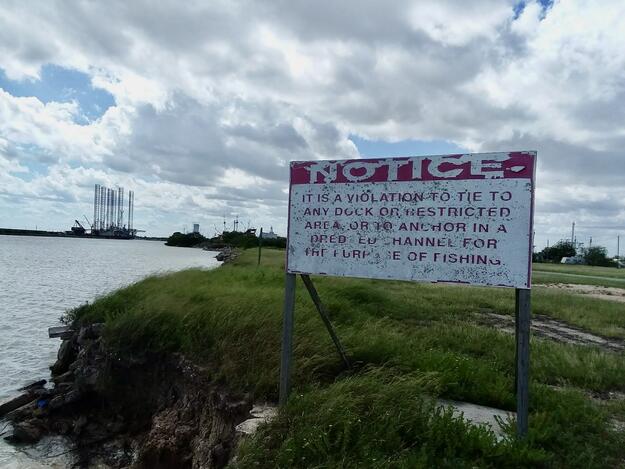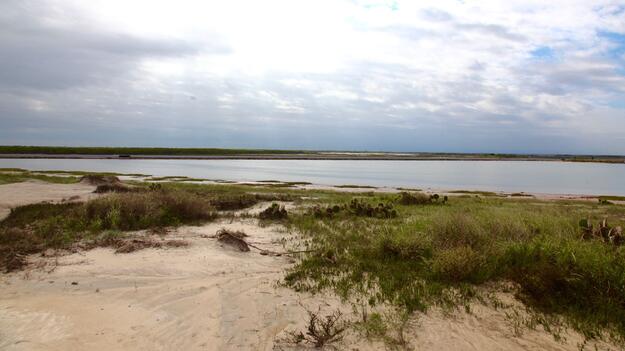Garcia Pasture
Site History and Significance
A Complex Cultural Landscape
The ancestors of the Carrizo/Comecrudo Tribe of Texas, as the nation of Esto’k Gna has come to be known, developed complex political organizations based on the natural landscapes of the ecologically diverse Rio Grande, which zigzags across the southeastern Texas border and into the state of Tamaulipas in Mexico. The area is home to one of America’s premier archaeological sites, known as Garcia Pasture, a pre-Columbian village dating to between 1000 and 1750 CE. This cultural landscape hosts human burials, village ruins, rock art, and shell working areas, as well as diverse wildlife, plant life, and the rich legacy of some of the first North American human inhabitants.
The Vanishing of a Nation’s Heritage and Way of Life
The cultural heritage and way of life of dozens of clans, bands, and societies from the vast nation of Esto’k Gna is rapidly vanishing due to changing coastlines, rising tides, and a proposed energy development threatening the future of Garcia Pasture. These losses compound a long history of disconnecting tribal members from their homeland, including the plundering of ancestral gravesites during archaeological expeditions conducted in the 1930s and denied attempts at reburying cherished ancestors, who lie unceremoniously in cardboard boxes on museum shelves inaccessible to their living descendants.
Despite the overwhelming historical evidence, the Carrizo/Comecrudo struggle to gain federal recognition as an Indigenous people and, therefore, lack protection from dispossession of their lands and iniquitous extraction of natural resources that would indelibly mar their cultural landscape and undermine their Tribal identity. Although the Native American Graves Protection and Repatriation Act (NAGPRA) facilitates the return of certain sensitive cultural materials and human remains to federally recognized tribes, the Carrizo/Comecrudo are not even afforded this form of restorative justice.
Taking Action against a Proposed Pipeline Plan
A recent ruling by the U.S. Court of Appeals for the District of Columbia determined federal government agencies had not conducted adequate analysis of the impacts on cultural and environmental resources of a proposed natural gas pipeline. The U.S. National Park Service called the pipeline into question because the cultural resource study “did not do a thorough enough job in researching and understanding the Garcia Pasture site, nor the prehistoric archeology of the Rio Grande Delta and deep South Texas.” This represents the first time a Federal agency has formally recognized the significance of this cultural landscape.
2022 World Monuments Watch
By including Garcia Pasture on the 2022 World Monuments Watch, WMF encourages further engagement of Indigenous communities as decision-makers in land use proposals and aims to support the Carrizo/Comecrudo in their calls to reconsider the proposed pipeline project. WMF plans to contribute to the Tribe’s efforts to gain Federal tribal recognition that affords them protections to their ancestral homeland and ends a practice of tribal erasure that has persisted since the first arrival of Europeans.
![]()
Google Arts & Culture
Garcia Pasture is featured in a collection of immersive Google Arts & Culture exhibits featuring archival images, interviews with Survivors, and more. To view the exhibits, click here.
Learn More
Through the World Monuments Watch, WMF collaborates with local partners to design and implement targeted conservation programs—including advocacy, planning, education, and physical interventions in the historic built environment—to improve human well-being through cultural heritage preservation.
Sign up for our newsletter to receive regular updates on our projects, stories from the field, upcoming events, and more!
![]()




